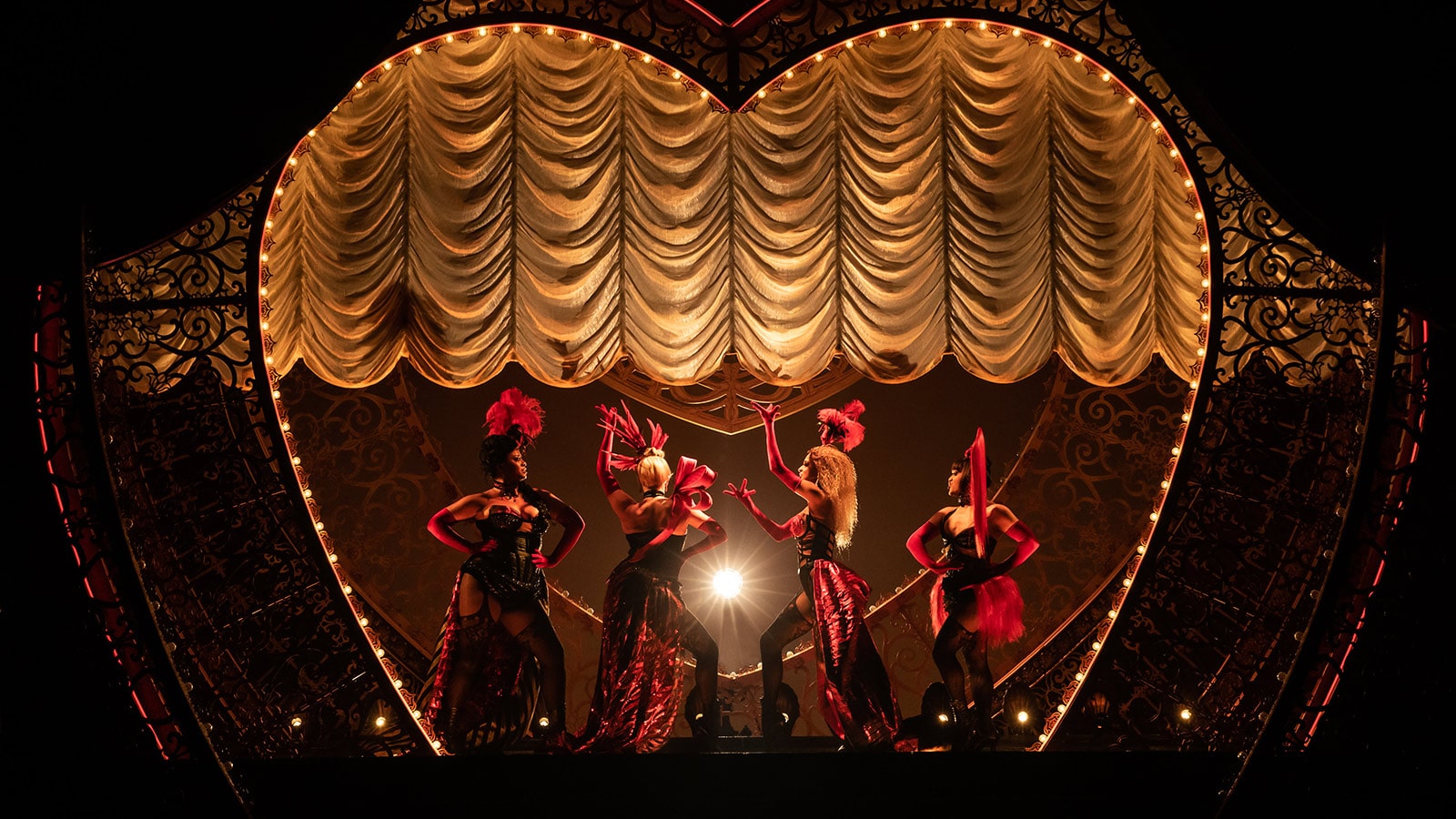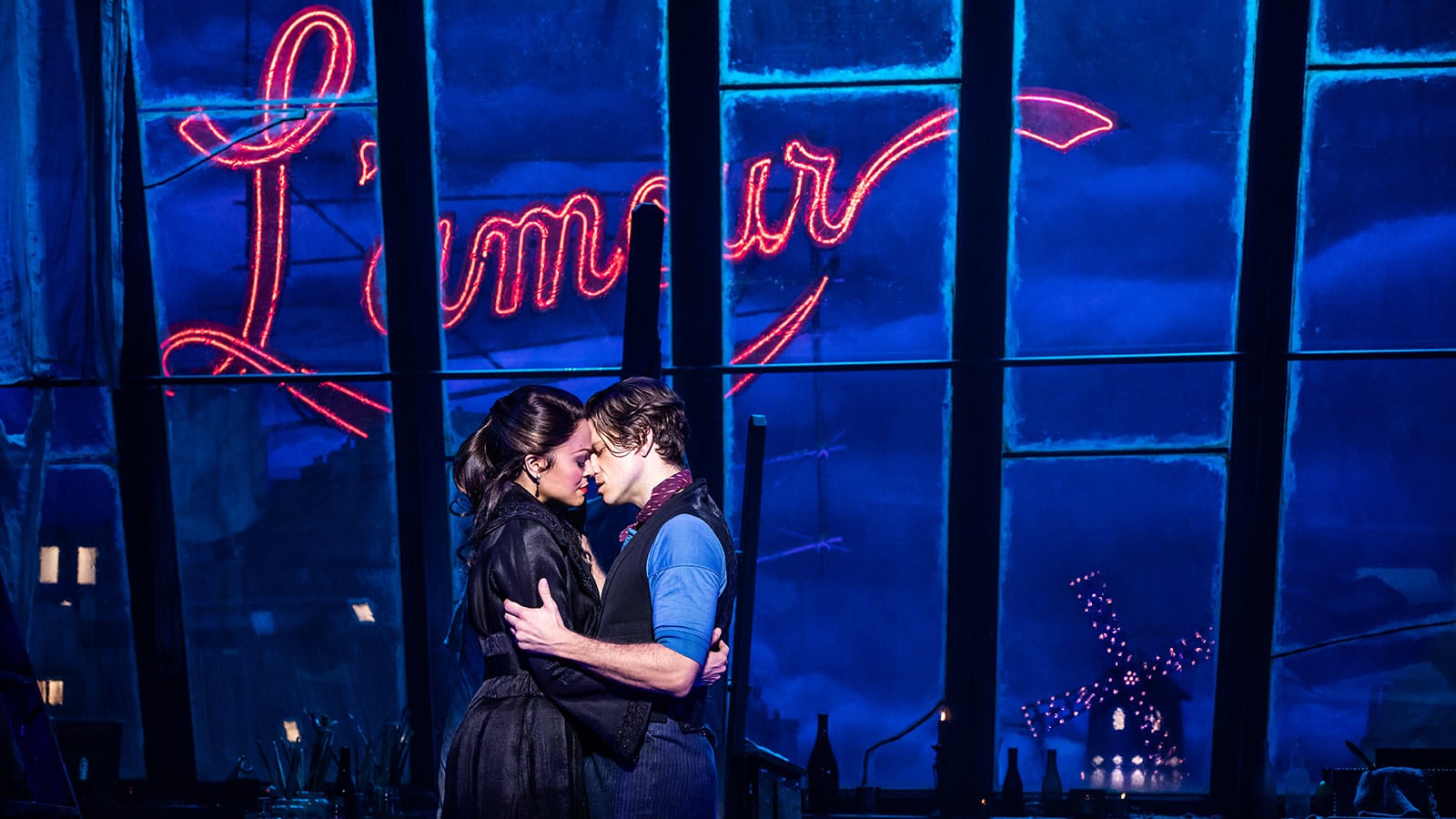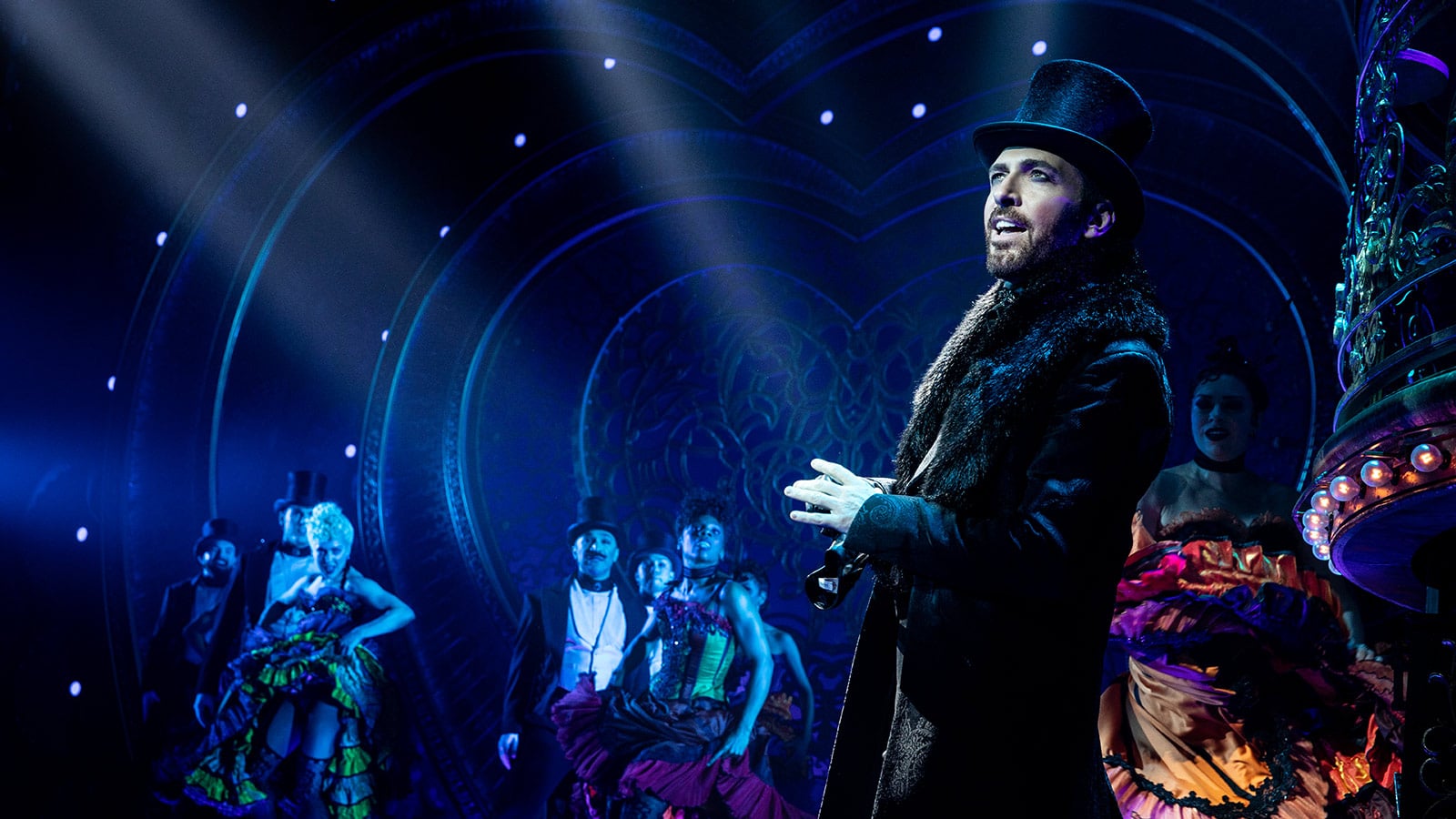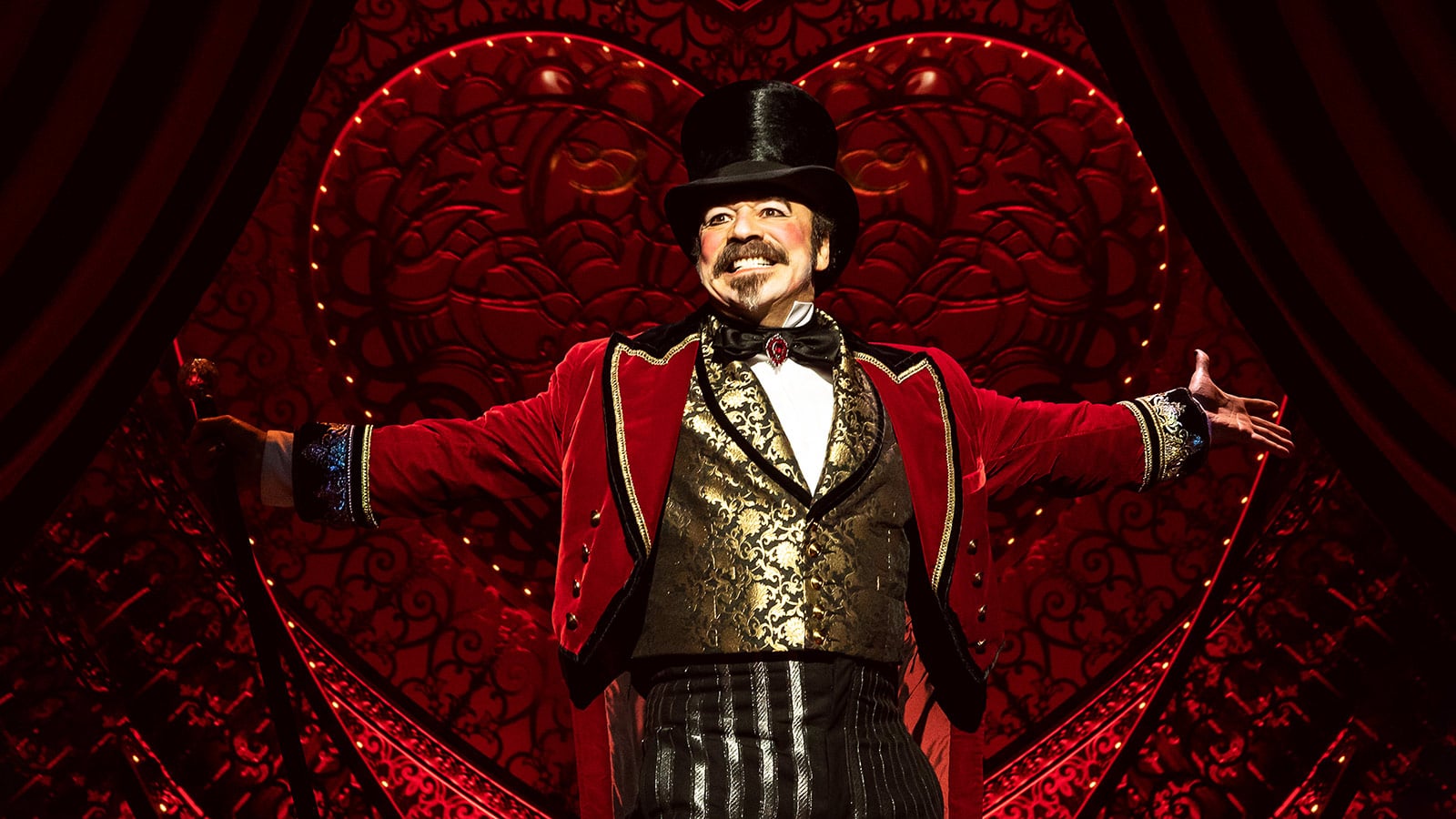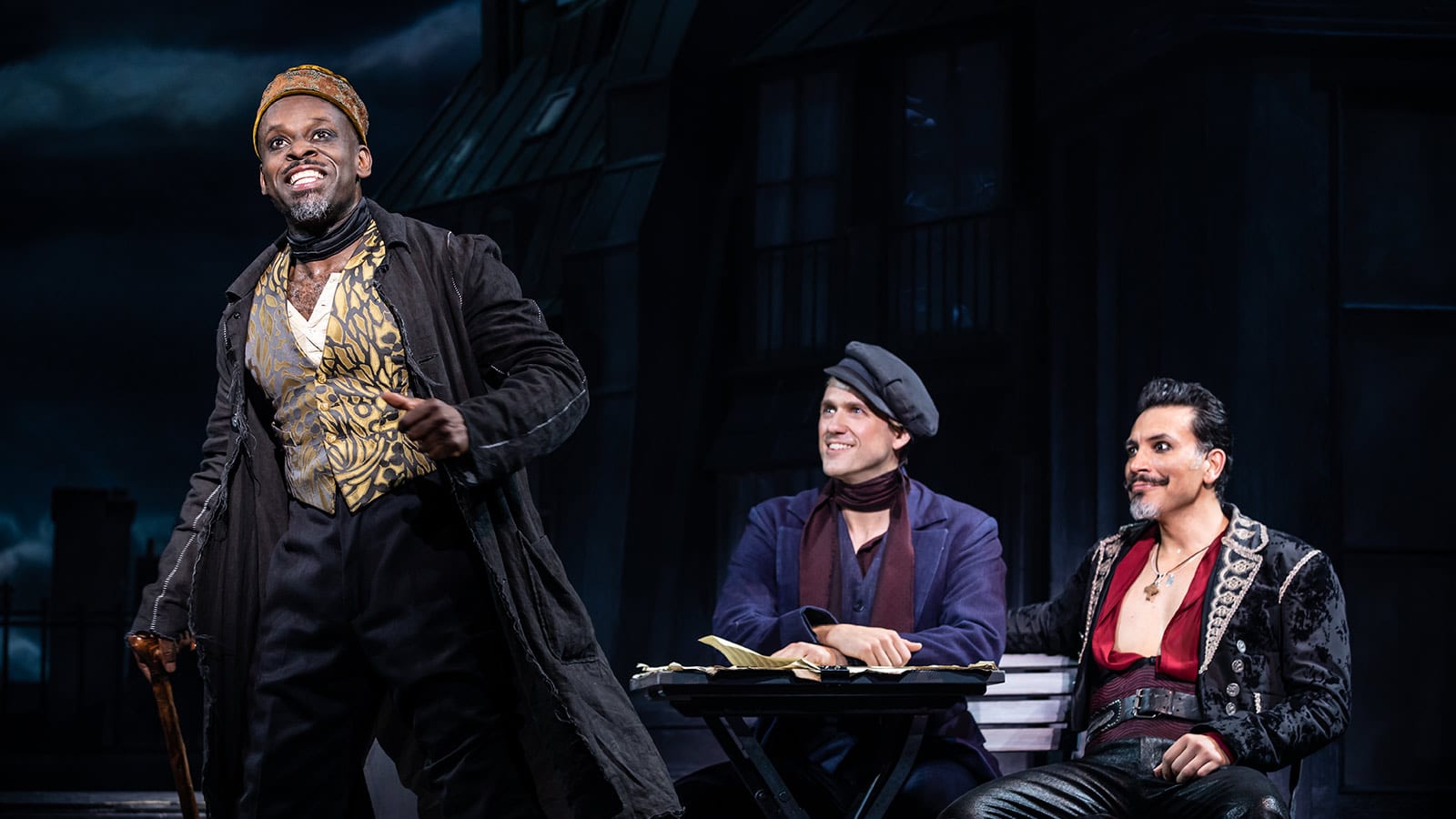What’s amazing is you can go straight to a product like the ULTRA-X and realize that it can do all of this in such a small package, and it makes the set designer happy, it makes me happy, and it makes the audience happy. It ticks all the boxes.”
Peter HylenskiSound Designer, Moulin Rouge! The Musical
Featured Products
1100-LFC, 900‑LFC, D-Mitri, Galileo GALAXY, Galileo GALAXY 816, LEOPARD, MM‑10, MM‑4XP, ULTRA‑X40, UPJunior, UPQ‑D3When Baz Luhrmann debuted Moulin Rouge! in 2001, his fantastical tale of “truth, beauty, freedom, and love” at the famed Parisian nightclub was heralded for reinventing the movie musical, with its exuberant cast of characters, frenetic visuals, and more-is-more production numbers that juxtaposed the Belle Époque drama onscreen with a tapestry of modern pop hits.
Eighteen years later, the story is reborn on the Broadway stage as Moulin Rouge! The Musical. The exhilarating new production expands upon the film’s musical offerings, showcasing more than 70 songs spanning a century of pop in a two-and-a-half-hour megamix of mashups, with sound powered by Meyer Sound.
The show, directed by Tony Awards nominee Alex Timbers (The Pee-Wee Herman Show, Bloody Bloody Andrew Jackson) opened at New York’s Al Hirschfeld Theatre this July following a preview run at Boston’s Emerson Colonial Theatre. It’s a grandiose, immersive affair, with a sumptuous set flowing into the house, breaking the fourth wall to draw audiences into its technicolor Bohemian world.
Extending production beyond the stage brought both opportunities and challenges to sound design. “As you break the plane of that proscenium and you start coming into the house, the width of the theatre becomes more apparent to the audience,” says Moulin Rouge! The Musical sound designer Peter Hylenski (Frozen, Beetlejuice, Rock of Ages). “The further back you get, the easier it is for the listener to locate the people onstage…when you get closer to the stage, if somebody plays to the far left or the far right of the proscenium, you’re so close that you’re turning your head to see that person.
“We had to make sure that we were giving audible cues as to where these people might be standing and singing or speaking,” Hylenski explains. “There were specific systems put in place to allow us to do more than just basic panning left or right; we did that using Meyer GALAXY and D-Mitri systems.”
For a production like Moulin Rouge! The Musical, which can turn on a dime from the slightest whisper to a full-blown rock number, linearity is a crucial attribute in a sound system. “We open with ‘Lady Marmalade,’ and we have to be able to deliver that through tender ballads and some very quiet moments,” says production sound engineer Simon Matthews. “We need the system to be able to behave in a way that allows us to have the impact and intelligibility go across a huge dynamic range, much wider than anything you would ever experience in a movie or TV or a concert. We can feel pretty confident scaling up and down in terms of our overall dynamic range and headroom and know that we’ll achieve the tonal qualities that we want, and that it’s not the speaker that is determining that; it’s the art that is being put in front of it.”
“That was what’s really impressive with Meyer Sound LEOPARDs: Putting dialog through a giant line array all of a sudden felt real,” adds Hylenski. “It didn’t feel mushy; it didn’t lose its clarity or its intimacy.”
The Moulin Rouge! The Musical sound system features close to 130 Meyer Sound loudspeakers. Highlights include two 11-box LEOPARD arrays, 28 MM-4 and 23 MM‑4XP miniature speakers, 24 UPJunior compact loudspeakers, and numerous UPQ and UPM-line speakers, including the first Broadway installation of Meyer Sound’s new ultra-wide-coverage UPQ‑D3.
“The UPQ-D3’s 80×80 pattern allowed us to really tailor the coverage from our center cluster,” says Matthews. “We’ve been using the original UPQs for many years and they’ve always allowed us to get great coverage and pattern control. When we first heard the D3s flown in their position, they performed exactly as expected. They are very smooth across the listening pattern and we were able to integrate them seamlessly.”
Low-end coverage is supplemented with 1100-LFC and 900‑LFC low-frequency control elements and MM‑10 miniature subs. (Show control is handled by a Meyer Sound D-Mitri system; a delayable matrix system includes four GALAXY 816 processors.)
Moulin Rouge! The Musical also marks the first Broadway installation of Meyer Sound’s new ULTRA‑X40, which brings the technology breakthroughs of the flagship LEO Family line arrays to a versatile, compact, concentric-driver loudspeaker. When production moved from Boston to New York, the team wanted to incorporate more lower-profile speakers to allow better sightlines, with fewer obstructed views.
“The set designers said, ‘wouldn’t it be great if it was a small loudspeaker?’ says Hylenski. “I said, ‘great, but it has to do a certain job. It has to have enough power, has to have enough coverage.’ What’s amazing is you can go straight to a product like the ULTRA-X and realize that it can do all of this in such a small package, and it makes the set designer happy, it makes me happy, and it makes the audience happy. It ticks all the boxes.”
Two ULTRA-X40 loudspeakers were installed on the first day of previews—a path the team chose without hesitation. “None of us had heard them or seen one in person anywhere,” says Matthews. “But the folks at Meyer know their stuff and if any of the prior products were an indication, we knew that they would be good. And we weren’t wrong.”
“We’ve been working with Meyer Sound for many, many years, on many different shows. There’s an assumed level of excellence in a lot of ways,” says Hylenski. “Something’s not going to come out of the factory or the design team that is subpar. So there’s sort of a built-in insurance policy.”
“It’s that bridge between the physics and the technical, and you’re connecting that all the way to the emotional, and the impactfulness of what sound can do for a production,” Hylenski concludes.
“That’s really what’s remarkable about the ULTRA-X, but also about the Meyer products in general. John Meyer is using his knowledge of physics and music and the power behind that to create products that give designers the tools to tell a story and to make an audience care about a character, or make an audience feel elated by what they’re hearing. And that’s what’s interesting about being a sound designer.”

